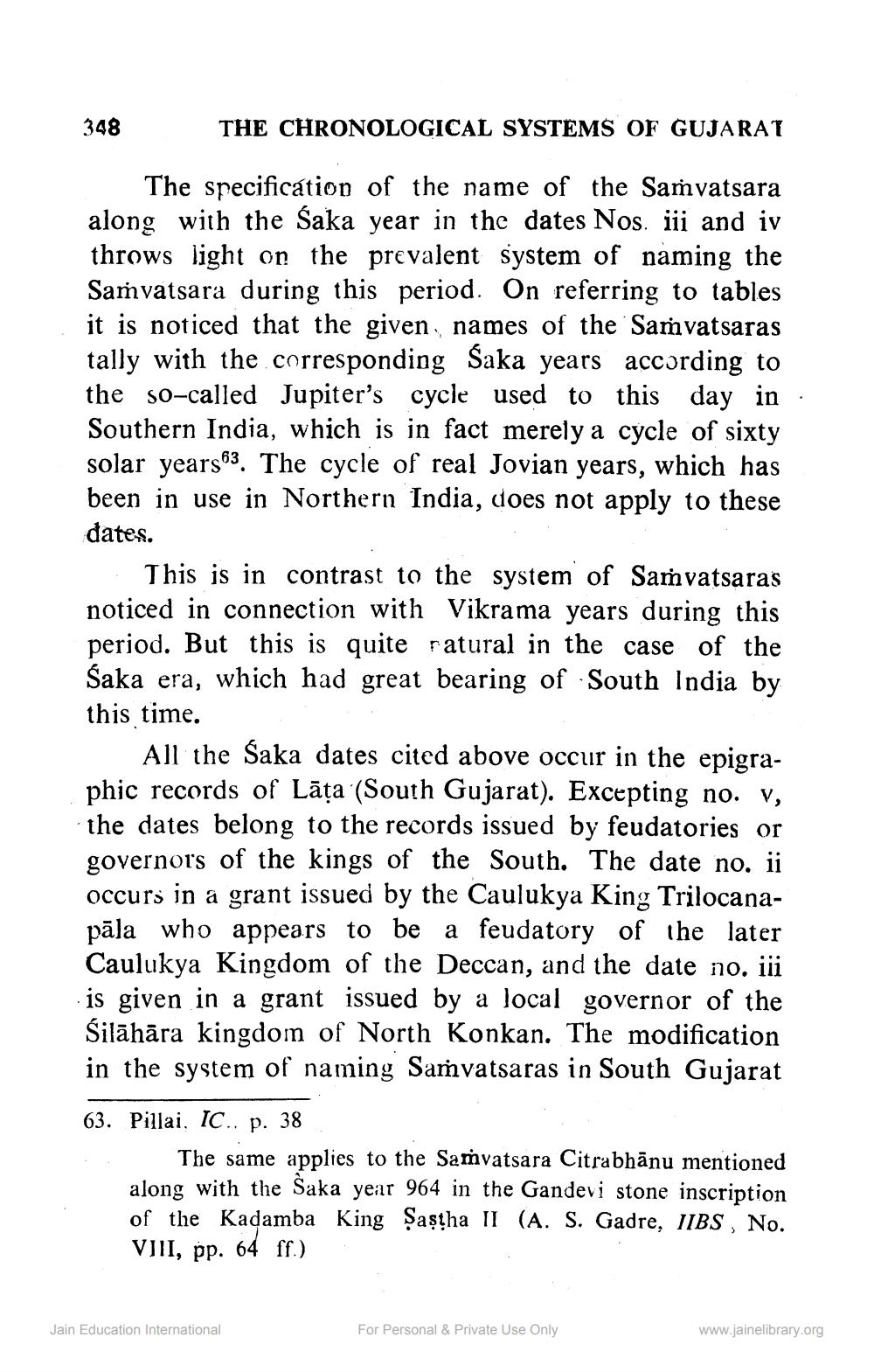________________
348
THE CHRONOLOGICAL SYSTEMS OF GUJARAT
The specification of the name of the Samvatsara along with the Saka year in the dates Nos. iii and iv throws light on the prevalent system of naming the Samvatsara during this period. On referring to tables it is noticed that the given names of the Samvatsaras tally with the corresponding Saka years according to the so-called Jupiter's cycle used to this day in Southern India, which is in fact merely a cycle of sixty solar years63. The cycle of real Jovian years, which has been in use in Northern India, does not apply to these dates.
This is in contrast to the system of Samvatsaras noticed in connection with Vikrama years during this period. But this is quite natural in the case of the Saka era, which had great bearing of South India by this time.
All the Saka dates cited above occur in the epigraphic records of Lata (South Gujarat). Excepting no. v, the dates belong to the records issued by feudatories or governors of the kings of the South. The date no. ii occurs in a grant issued by the Caulukya King Trilocanapāla who appears to be a feudatory of the later Caulukya Kingdom of the Deccan, and the date no. iii is given in a grant issued by a local governor of the Šilāhāra kingdom of North Konkan. The modification in the system of naming Samvatsaras in South Gujarat 63. Pillai, IC.. p. 38
The same applies to the Samvatsara Citrabhānu mentioned along with the Saka year 964 in the Gandevi stone inscription of the Kadamba King Sastha II (A. S. Gadre, IIBS, No. VIII, pp. 64 ff.)
Jain Education International
For Personal & Private Use Only
www.jainelibrary.org




